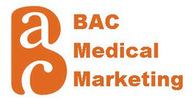When you ask the people genuinely upset at this utter lack of interoperability, what exactly they feel is lacking, the answer is invariably that EHRs should be able to talk to each other, and there is no excuse in this 21st iCentury for such massive failure in communications. The whole thing needs to be rebooted, it seems. After pouring tens of billions of dollars into building the infrastructure for interoperability, we are discovering to our dismay that those pesky EHRs are basically antisocial and are totally incapable or unwilling to engage in interoperability. The suggested solutions range from beating the EHRs into submission to just throwing the whole lackluster lot out and starting fresh to the tune of hundreds of billions of dollars more. When it comes to sacred interoperability, money is not an object. It’s about saving lives.
Every EHR vendor flush with cash from the Meaningful Use bonanza is preparing to take its unusable product to the next level, machine interoperability is shaping up to be the belle of the ball. A simple minded person may be tempted to wonder why people who, for decades, manufactured and sold EHRs that don’t talk to each other, are all of a sudden possessed by interoperability fever. The answer is deceptively simple. After exhausting the artificially created market for EHRs, these powerful captains of industry figured out that extracting rents for machine interoperability is the next big thing.
The initial pocket change comes from selling machine interoperability to their current bewildered (or stupefied) clients, and to less fortunate EHR vendors. But the eventual windfall will not come from the health care delivery system or the hapless patients caught in its web. How much do you think access to a national and hopefully global network of just-in-time medical and personal data is worth to, say, a pharmaceutical company giant? How about life insurance, auto insurance, mortgage, agribusiness, cosmetics, homeland security, retail, transportation? Google built an empire by piecing together disjointed bits of personal data flowing through its electronic spider webs. What do you think can be built by combining everything Google knows with everything your doctor knows and everything you know about yourself?
Machine interoperability is not about patient care in the here and now. Interoperability is not about ensuring that all clinicians have the information they need to treat their patients, or that patients have all the information they need to properly care for themselves. Interoperability is about enriching a set of interoperability infrastructure and service providers and about electronic surveillance of both doctors and their patients. Machine interoperability is about control, power and boatloads of hard cash.
For example, if you are hospitalized, it makes sense that your primary care doctor should know that you are (not in the past tense), and when you are discharged, he or she should be appraised of what transpired during your hospital stay. In the old days, before the advent of hospitalists, this could be assumed. Today, thanks to more efficient division of labor, not so much. If the government was genuinely concerned about smooth transitions of care, it would mandate that upon discharge, hospitals must provide all pertinent information to the primary care doctor, and the patient, by any means necessary. If this meant that a piece of paper is stapled to the patient’s robe, and that the hospital employs an army of delivery drones for the purpose, so be it. Eventually, hospitals, which are big businesses, would come up with the most cost effective and efficient way to be compliant with the law.
That’s not how things currently work or how they are envisioned to work. Discharge summaries have a mandated format of structured data elements, complete with metadata, based on government approved standards that change with frightening regularity. Furthermore, to satisfy regulations, the summaries must be generated and transmitted electronically from one “certified” EHR to another, allowing for a host of intermediaries to access and collect said data or at the very least its metadata. Consulting with the PCP by phone for an hour doesn’t count. Sending the information from a non-certified software package doesn’t count. Printing and sending over information by special courier doesn’t even begin to count. Attempting to build a device that streams the information as it happens directly into the PCP medical record will get you excommunicated or burned at the stake.
If you refer a patient to cardiology service, and in a misguided senior moment decide to pick up the phone and talk to the cardiologist at length about this patient, it doesn’t count. If the cardiologist pens a concise and beautiful letter to you after she sees your patient, thanking you for the referral and summarizing her impressions and plan of care in proper English, it doesn’t count. The only thing that counts is a lengthy clinical summary containing all the sanctioned data elements sent from you to the cardiologist, copied in its entirety and returned from the cardiologist to you, hopefully with some indication about what happened during the consult. Having your EHRs talk to each other this way is considered interoperability. Whether you actually read the interoperated information is irrelevant. As long as the contents are captured by the network for other uses, it’s all good.
But wait, there is more. If you practice, say, in St. Louis, Missouri and work for a huge health system or somehow managed to string together a machine interoperable network with the twenty or so specialists you use on a regular basis and the four hospitals where you have admitting privileges, that’s not good enough. Nothing is good enough unless any research lab in Hopewell, New Jersey or Bangalore, India can discover you on the (inter)national interoperability network and request data about a patient you may have treated five years ago, and nothing will be good enough unless any app store developer in Cupertino, California can discover your patient and subsequently obtain her medical data once she downloads a free diet app from iTunes.
Are you “just” a patient eager to be “engaged” in your own care? Picking a doctor who will spend two hours with you listening carefully and explaining things you don’t understand, and who will give you his cellphone number in case you have more questions, doesn’t count. Getting a team of physicians together on a conference call to brainstorm about your mom’s options, doesn’t count. Building a long term relationship with your pediatrician and having her come see your sick kid at home because your car is in the shop and your toddler can’t keep any food down, and now the baby won’t stop crying, doesn’t even register on the interoperability radar. Nothing counts unless you log into a website or an app, accept the cookies, the tracking beacons, the small print, and then click on some buttons to verify that you are a “Never smoker”, or to peruse machine generated visit notes that even your doctors don’t read anymore.
Perhaps machine interoperability on a national scale is a wonderful thing, but so is having arugula in every fridge. There is absolutely no evidence that either one will improve health and/or reduce the price of care. Every dollar spent on national machine interoperability is a dollar that was previously used, or could be used, to provide medical care. Where did we find the moral fortitude to demand that people experience adverse outcomes at least three times before letting them have a slightly more expensive pill, while spending billions of dollars to incentivize the purchase of unproven and often failing technologies? If we are supposed to be parsimonious in our use of health care resources, if we are supposed to choose wisely in all other areas, where is the comparative effectiveness research showing that expensive machine interoperability on a grandiose global scale provides more value than cheaper and simpler localized or human mediated communications?
- Add one doctor visit for every Medicare beneficiary for the next 8 years
- Give primary care a 20% raise for the next 4 years
- Double the number of residencies for the next 3 years
- Educate 60,000 new primary care doctors from scratch
- Buy an iPhone glucose monitor for every diabetic patient and an iPhone BP monitor for every hypertensive patient (no, I’m not a “technophobe”)
- Put a brand new playground, a gym teacher and a home economics teacher in every elementary school in the U.S.
- End homelessness in America

 RSS Feed
RSS Feed































